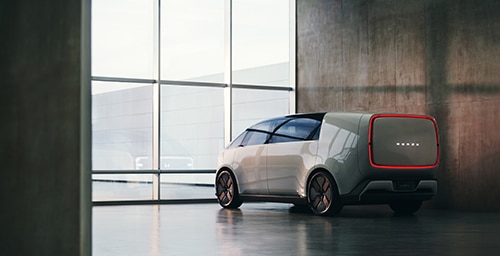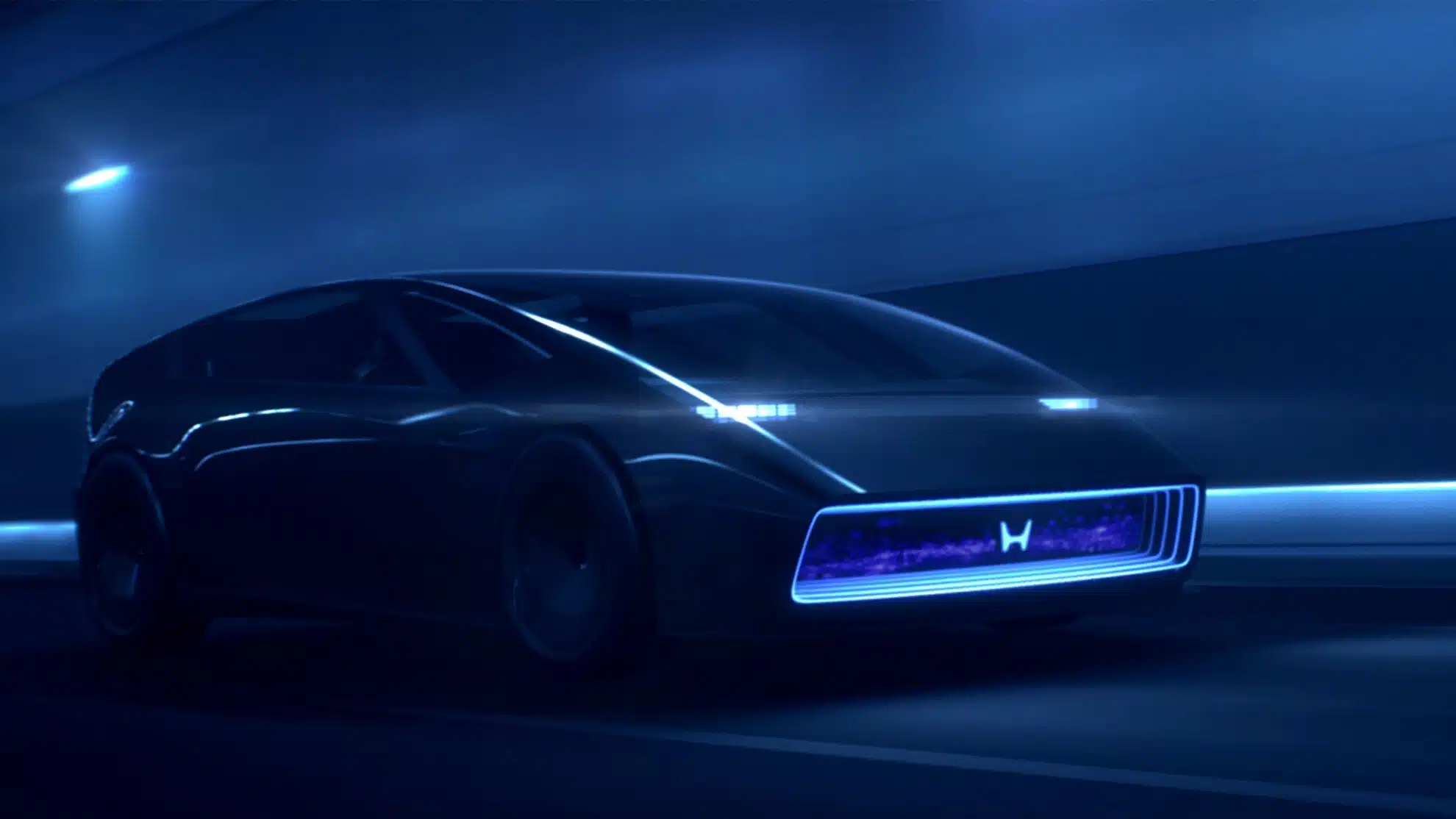Honda stunned audiences at the 2024 Consumer Electronics Show (CES) by unveiling two sleek and imaginative electric vehicle concepts that provide a visionary glimpse into the automaker’s next-generation lineup.
Dubbed the Saloon and Space-Hub, the concepts represent the forerunners of Honda’s forthcoming “Honda 0 Series” – a brand-new series of EVs that the company confirmed will hit global markets starting in 2026.
Centered around a “Thin, Light, and Wise” developmental ethos, company executives said that the radical Honda 0 trio of concepts showcase the artistic, dynamic, and technological capabilities that they aim to imbue in affordable, mainstream EVs over the next decade.
“The mobility we dream of is not an extension of the ‘thick, heavy, but smart’ notion that has defined EVs” said CEO Toshihiro Mibe when announcing the company’s product roadmap. “We will create a completely new value from zero based on ‘thin, light and wise’ as the foundation for our new EV series”, the leader of the Japanese automaker added.
The Sleek Saloon Concept Will be Available in 2026 in the US
The headlining Saloon model wowed attendants with exotic scissor doors (often found on hypercars) that reveal a minimalist, lounge-inspired cabin, dominated by a square-shaped steering yoke and a panoramic digital display.
The vehicle appears optimized for aerodynamic efficiency, with a dramatically tapered, curved profile unlike any Honda model currently in production. Its sweeping and uninterrupted lines are stretched taught across the wheels to reduce drag, adding tension and athletic dynamism from front to rear.
According to the developers, sustainability also defines the Saloon, evidenced through the extensive use of plant-based and recycled materials from its carpet to seat surfaces.
Honda said a production vehicle closely inspired by the Saloon concept will come to the North American EV market in 2026 as the first entrant of the Honda 0 lineup. This near-term production model was not shown or detailed apart from the Saloon design study.
A Versatile ‘Space-Hub’ Concept Previews the Future of Individual Transportation
The more upright Space-Hub trades overt sportiness for extreme practicality in what Honda dubbed an “everyday people mover” tailored to the coming age of autonomy. The vehicle is nothing like you have ever seen before with massive panoramic windows and a boxy trunk.

Thanks to its flat, open interior layout, executives said that the Space-Hub aims to transform daily travels into a mobile “third living space” – a personal lounge or office on wheels where occupants can relax, work, or socialize. T
A bench that runs the full width of the cabin can be retracted into the floor to create maximum cargo volume when needed, demonstrating the adaptability of the vehicle’s space.
The Space-Hub could be the next evolution of the sprinter van or camper van, used by road trippers almost as a second (or first) home.
Like the Saloon, the console area is dominated by digital interfaces and backlit with ambient lighting schemes that designers said evoke the feeling of floating through the cosmos.
The Space-Hub also offers innovative accessibility through rear coach-style doors that open in opposite direction of the front passenger entryway to reveal a welcoming portal into the lounge-like cabin.
Overall, Honda emphasized that the concept focuses on greatly expanding utility compared to existing vehicles in its lineup. The model remains a future design study without a production timeframe.
Next-Gen Tech – Automated Driving Systems on the Horizon
As audacious and future-forward as the Honda 0 concepts may appear, company technologists said that customers should expect similar envelope-pushing innovation integrating artificial intelligence and other revolutionary features when models begin reaching dealerships.
Both vehicles preview unique technological advancements Honda intends to introduce over the next decade as part of the 0 Series rollout.
For starters, Honda said it will equip an advanced automated driving system to its 0 Series production models by mid-2020s. While initial iterations will enable hands-off highway driving in limited conditions, they promised that the technology will expand its capabilities over time.
By the latter half of the decade, Honda aims for its AD system to enable hands-free capability on surface streets and more challenging environments. This would include complex interpretations of objects and events along with AI-assisted control during emergencies.
To ensure confidence in autonomous functionalities, the system incorporates an array of sensors, radars, and cameras to observe the vehicle’s surroundings with full 360-degree perceptual coverage, Honda engineers highlighted.
Futuristic steering yokes inside both the Saloon and Space-Hub concepts also hint at vehicles designed for computer command from the outset.
Battery Tech Advancements Target 15-Minute Fast Charging
In tandem with self-driving advancement, Honda said it is aggressively developing battery and efficiency capabilities in line with its major electrification push throughout this decade.
Honda targets vastly improved fast-charging that can deliver up to 80% battery refills in around 15 minutes for the 0 Series models that will enter production in the coming years, better than any production EV right now.
The automaker also set lofty goals for battery durability, with less than 10% degradation in capacity after a decade of average customer use. Both areas would mark a new record among mass-market EVs if achieved.
To deliver such benchmarks, Honda engineers are banking on the expertise gained from over two decades of developing hybrid powertrains and battery systems.
A Peak Inside Honda’s Newly Proposed Architecture for the 0 Series
Underpinning the 0 Series lineup is an all-new dedicated EV architecture designed specifically for next-gen electric models rather than adapted from existing platforms.
The skateboard-style chassis layout houses flat batteries seamlessly inside the floor. This enables a low, sleek profile that promotes the “Thin” aesthetic Honda wants to associate with its EVs.
The design maximizes interior roominess relative to the exterior footprint. Flat floors also allow freedom in configuring interior components.
Engineers said that this foundation enables efficiency advancements and greater structural rigidity compared with retrofitted architectures. It also presents expanded styling possibilities inside and out.
Sluggish acceleration plaguing some EV rivals will be addressed via rear-biased weight distribution from the underfloor batteries and potent motor drive units fitted at each axle.
Honda is Evolving to Embrace the All-Electric Age
With sustainability in focus, Honda’s leadership team emphasized that the Honda 0 launch marks a historic turning point where the brand begins to embrace fully electric powertrains after decades of pushing forward hybrid technologies.
The company aims to only sell vehicles with zero tailpipe emissions by 2040 as part of its broader corporate carbon neutrality targets. The rapid rollout of the Honda 0 Series globally is intended to serve as proof of the firm’s concise steps toward EV adoption.
